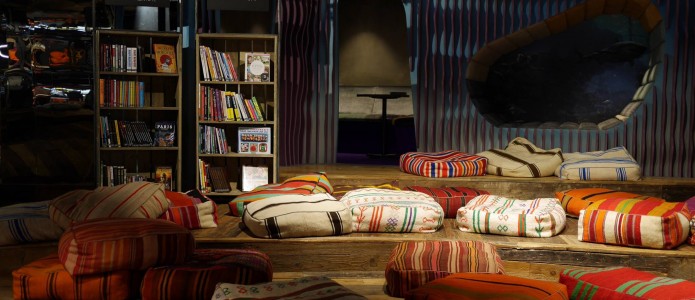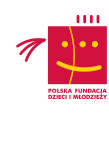
How is it possible to be effective in engaging and motivating young people – potential local activity participants? How can joint projects be developed with local residents to build a sustainable civic society? Suchquestions were on the table during each and every meeting organised as part of a five-day study visit of NGO representatives to Oslo and Norwegian organisations supporting children and young people.
The Norwegian Key to Success
It turns out that the answer to the question is not at all intricate. Three issues are of key importance to success in work to support local communities: the simplicity of solutions, co-operation, and passion.However, definitions in themselves are no guarantee of success; they are merely a foundation upon which further action may be developed. The aforementioned simplicity of solutions involves close attention being paid to the needs of local Oslo district residents, and the implementation of projects responding to actual needs thus identified. Co-operation is about joint work by organisations and groups of people affected by a given project. Last but not least, the passion apparent in the work of people representing these organisations. Yes, their work is their passion.Anyone who has ever had the opportunity to work in the non-governmental sector knows that the effort involved is extremely demanding, with new challenges appearing daily. This is why the visit to the Deichmanske Bibliotek in Oslo’s Tøyen district of was so interesting. The manager of this amazing place said, “This place is for people, not only a library.” It is indeed a place created with true passion. Its friendlyspace encourages visitors to spend time there – in a group, alone, to read, to talk, or just to enjoy a break.This extraordinary library includes space designed exclusively for youngsters – the BIBLO TØYEN – open to children aged 10 to 15 only. The place is a simple response to needs voiced by children precisely of that age as there had been no offer they could take advantage of before. The solution was designed as a follow-up to numerous conversations with children, with such questions as “What do you enjoy?”, “What makes you happy?”, “How do you spend your free time?” Upon having analysed such conversations, adults decided to create a place which would become more than a library – a place where kids could read books, take part in workshops and meetings, play games, play with friends, or enjoy quiet time. The actual design of BIBLO TØYEN responds to children’s needs as well. They helped create the venue. It was built thanks to them. They feel responsible for it, and love visiting it. This example goes beyond the simple solution of using local space – it has been created jointly with local residents, and in response to their local needs.
The Children’s Voice Matters
BIBLO TØYEN is an interesting example of children’s participation in organisational activities. Grete Vandvik of Save the Children Norway declares that the key component of getting children involved in projects involves an individual approach – only then is it possible to move to considering children as a broader community. Every child should feel that individual activities are specifically targeting them, that they have been tailored to meet their needs. This is how adults can influence children – and how children’s activities affect decisions made by adults. Engaging and motivating local residents to act and develop local space requires direct contact. It is important to reach all age groups. The simplest way is to organise a meeting at a school, and talk to children and young people. In their attempts to reach local adults, representatives of a number of organisations went to places where people live, work, and spend time every day. Conversations took place at the seats of local authorities, for example, and at kindergartens, or during local events. You need to talk to residents about what community means to them, what they would like to do, what they find important, and what they find interesting.
Doesn’t It Seem Simple?
When it comes to co-operation between local and regional authorities and the non-governmental organisations’ sector, it takes place at a number of levels. The SALTO prevention programme is a very interesting example; it involves Oslo the authorities co-operating with the Norwegian police with the goal of
preventing crime and alcohol and drug addiction in the children’s and young people’s community in the capital city. The target group includes young people as well as Oslo city authority officials, the police, schools, parents, and leaders of organisations acting to support children and young people. Their mutual and frequently complementary activities are vital to project success. This is why multi-dimensional co-operation with varying stakeholder groups remains hugely important.
As the Norwegians are wont to emphasise, success requires constant listening and talking. Why? Because the target group keeps changing and shifting incessantly, alongside its membership, needs, and experience. What was operational several years ago may no longer be applicable today. It is important that local residents have a sense of being able to have an impact on their environment, and form the space they inhabit. As often as not, such circumstances help identify social leaders – persons willing to assume responsibility for the creation and efficient operation of the given local community. One such organisation, the Tøyen Sportsklubb, operates a dedicated leadership programme – the Tøyenakademiet – for people aged 15 to 23. Leadership school graduates are charged with the task of becoming the proliferators of activities benefitting the local community, and initiating work at a local sports club or with other organisations. In the course of our meetings, we learned how to become successful in engaging citizens in social activities. It might seem that the Norwegian model is universal and would thus be applicable anywhere. However, Norwegian non-governmental organisations do suffer from the occasional problem with reaching certain social groups – such as people aged 29 to 40 – and are therefore continuously searching for new solutions. Moreover, Norwegian social activists are constantly emphasising that patience is required – the effects are by no means immediate. It does happen that the entire process takes over ten years, yielding long-term results only.
The study visit brought numerous benefits – Poland has become an increasingly concerned listener to the potential beneficiaries of the project; needs are analysed in dialogue with future project recipients. This is why it was so important to be able to take a glance at how others operate. This is how we can become better at our own activities back home. It goes without saying that Polish non-governmental organisations are created by people of passion. Yet we lack well-developed co-operation between organisations, and a good practice sharing mechanism of the kind encountered in Oslo. In Norway, numerous programmes are implemented at the government level. This actually translates into “forced” co-operation at a number of levels. The Norwegians are calm when talking about the threats and opportunities carried by their projects – they are simply satisfied with their activities.
By Ewelina Stachura, Katowice Regional Institute
Photo Biblo Toyen




